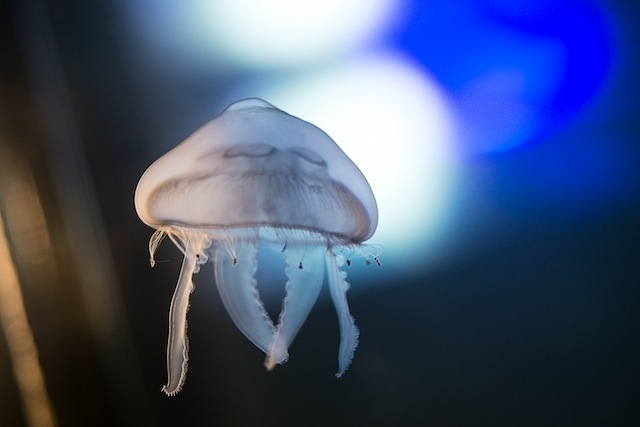Thyssen-Bornemisza Art Contemporary Academy, Vienna 2 June – 19 November
Six years ago, Francesca von Habsburg quietly launched TBA21-Academy – the ‘exploratory soul’ of her art foundation, TBA21. From the beginning, the Academy, founded as a small research team, was set on exploring our oceans and seas. On a vessel called the Dardanella, von Habsburg’s many sea expeditions have been manned by multidisciplinary teams consisting of invited artists, oceanographers, writers, curators and others (including von Habsburg herself) researching, engaging with locals and making art in Jamaica, Costa Rica, Papua New Guinea, Fiji, Iceland and beyond. It’s stunning, considering the Academy’s activity, that Tidalectics is its inaugural exhibition. It’s also the final exhibition in TBA21’s Augarten venue in Vienna: von Habsburg, as has been widely reported, is moving the foundation’s exhibition programming and her collection to Prague as part of a long-term loan. So, this exhibition is a first and a last.
Several works come directly from Academy journeys. (Some others, meanwhile, are pulled from TBA21’s collection.) Tue Greenfort’s Tamoya Ohboya (2017), an underlit sculptural tank filled with hypnotically moving jellyfish, sits on a stainless-steel table across from a video showing wild jellyfish shot on Dardanella trips. In the same darkened space is Susanne Winterling’s multipart installation Glistening Troubles (2017): the spinning figures in her CGI-animated videos are riffs on bioluminescent algae, which light up when touched or moved, but modern minds invariably also read them as screensavers or touchscreens. Cameroonian Em’kal Eyongakpa’s full-room installation Gaia beats/bits III-i/doves and an aged hammock (2017) pairs a movable wooden floor (an old boat’s weathered deck?) with a fishing net suspended from the ceiling and filled with detritus like driftwood and litter, a constellation that (for me) evokes ideas of forced migration. Janaina Tschäpe, who shares a first name with a Brazilian sea goddess and has long collaborated with marine biologist David Gruber, shows two long leporellos that display their deep-sea research; the ‘inventory’ of visuals in Fictionary of Corals and Jellies and Blood, Sea (both 2017), colourful pencil drawings of sea life as well as chemical formulas scribbled almost like school notes in the margins, recalls historical sea explorers’ logbooks.
Grounding the exhibition are several films that combine documentary footage with innovative use of sound. Julian Charrière’s Iroojrilik (2016) traces the effects of the US’s nuclear experiments on the Bikini Atoll in the Marshall Islands; the underwater and beach footage is as dramatic as the suspenseful soundtrack by Edward Davenport. Alexander Lee’s Me-ti’a – An Island Standing (2017) uses drone footage of Mehetia, a volcanic area east of Tahiti (where the California-born artist grew up) to highlight, perhaps, our lasting Western notions of exoticism. And in Darren Almond’s A (2002), Antarctic ice formations appear to ‘dance’ in the sea to a bass-heavy soundtrack. Almond went to Antarctica in 2002 on a ship clearing waste from the icy continent’s shores. Fifteen years later – a trillion-ton iceberg broke off an Antarctic ice shelf in July 2017 – the work is startlingly prescient.
Thematically, a lot is going on here (ecology, migration, biology, physics, history). Perhaps too much, despite the clear exhibition choreography. But the show, curated by ArtReview contributor Stefanie Hessler, succeeds in combining the accessible and abstract, emotional and intellectual, political and aesthetic. Although the Academy does plenty of philanthropic work, the exhibition manages to avoid becoming a pleading ecological call, or a cheap riff on The Undersea World of Jacques Cousteau (1968–75). Here, artistic research – a term that sounds promising but whose results are so often overintellectualised and formally underwhelming (why make an object when a good text is enough?) – appears engaging and meaningful.
Tidalectics shifts the viewer’s perspective from the fixed to the fluid – the titular term comes from Barbadian poet Kamau Braithwaite and indicates exactly this. At the opening, artist Jana Winderen performed a sound piece in which hydrophonic sounds engulfed listeners (her sound installation bára, 2017, runs at announced intervals that correspond with the tidal patterns of Trieste, the closest coastal city to Vienna). Listening was like diving into an aquatic soundscape, a natural language whose syntax is about transition, ambiguity and change rather than specificity, rigidity. Nature is perhaps telling us to be more like water; we’d do well to listen.
First published in the September 2017 issue of ArtReview
